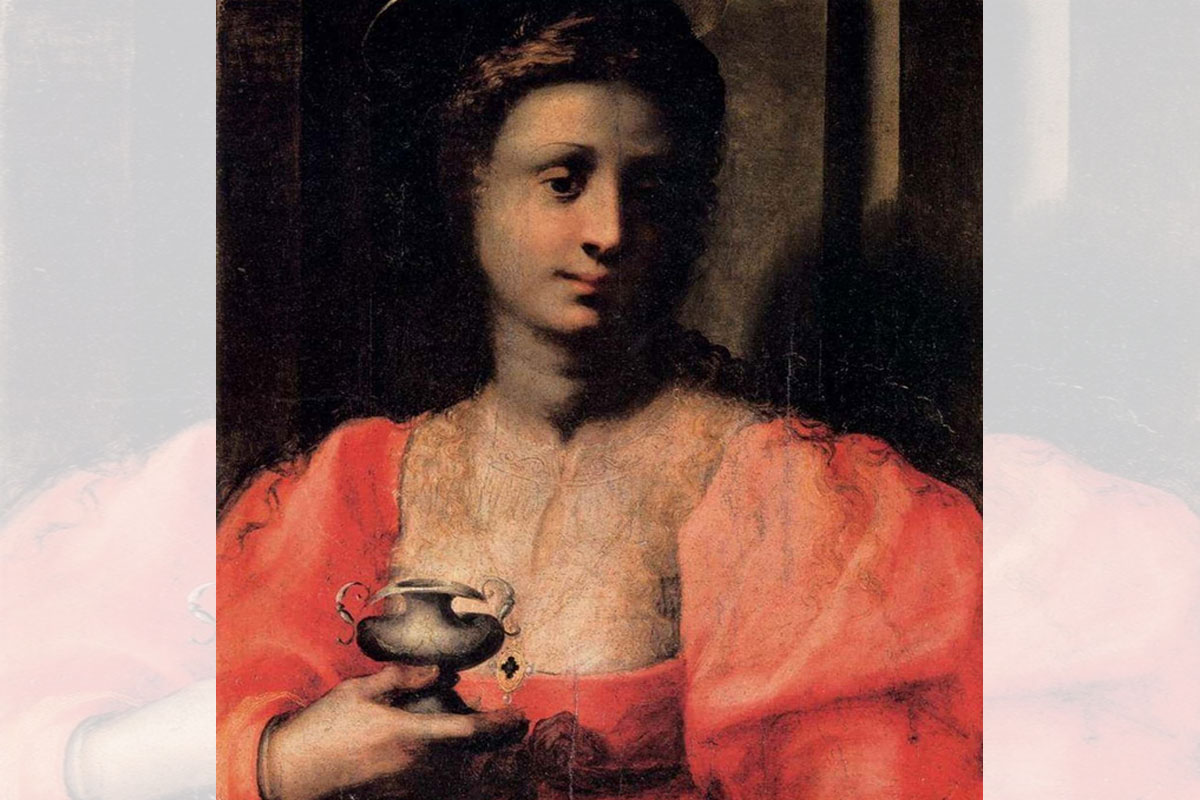
Meet The Woman Who Poisoned Makeup To Help Over 600 Women Murder Their Husbands
Genevieve Carlton
She’s the most successful serial killer whose name you’ve never heard. Giulia Tofana killed hundreds of men in 17th-century Italy when she turned her makeup business into a poison factory, selling a deadly concoction called Aqua Tofana. Her crimes place her among the most deadly female serial killers in history, alongside the Russian noblewoman who killed over 100 people and the Hungarian Blood Countess who may have killed 650 people.
But Giulia Tofana, serial killer, didn’t need wealth and power to kill. Instead, she helped aspiring widows who wanted to use the poison to murder their husbands. During the Renaissance, in an era of arranged marriage without the possibility of divorce, the only way out of an unhappy union was death. And Aqua Tofana provided a quick solution for unhappy wives.
Giulia Tofana, the woman who poisoned men with arsenic, believed she was helping women when she sold Aqua Tofana. And, as with other famous arsenic poisoning cases, she believed her actions were justified. She was able to murder hundreds of men for nearly 50 years without being caught – until, in a shocking twist, a bowl of soup caused her downfall.
________________________________________
• Photo: Domenico Puligo / Wikimedia Commons / Public Domain
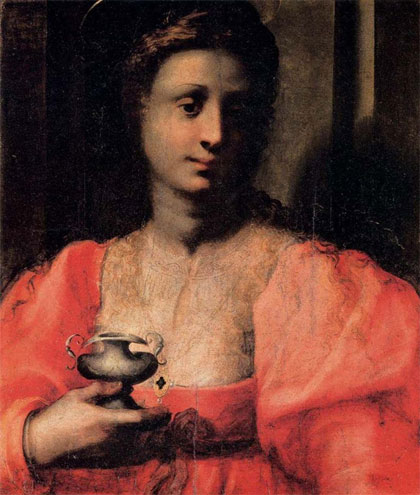 Giulia Tofana Made Italian Cosmetics Using Deadly Poisons
Giulia Tofana Made Italian Cosmetics Using Deadly Poisons
Who was Giulia Tofana? In many ways, one of history’s most prolific serial killers remains a mystery. There are no portraits of Giulia. During the mid-1600s, Giulia sold cosmetics in southern Italy – and one of her special recipes, known as Aqua Tofana, contained enough arsenic to kill without leaving a trace. Her goal was to keep her poison secret, so that she could continue to sell the potent concoction. And she managed to fool the authorities for nearly 50 years.
• Photo: Evelyn De Morgan/Public Domain / Wikimedia Commons
 Giulia Was Caught Because Of A Bowl Of Soup
Giulia Was Caught Because Of A Bowl Of Soup
In the 1650s, one of Giulia Tofana’s clients got cold feet. She’d bought the Aqua Tofana from Giulia and taken it home. She’d even gone so far as to put the poison in her husband’s soup. But suddenly the woman was gripped with regret. She stopped her husband from eating the soup, and the suspicious man forced her to tell the truth. Then, he turned her over to the Papal authorities in Rome. She finally confessed and pointed the finger at Giulia Tofana as the culprit who had sold her the poison.
Giulia was warned of her impending arrest, and she fled to a church, asking for sanctuary. It was granted, but when a rumor spread through Rome that Giulia had poisoned the water, the church was stormed, and Giulia was handed over to Papal authorities, who tortured her.
• Photo: Charles E. Chambers / Wikimedia Commons / Public Domain
 On His Deathbed, Mozart Said He Was Poisoned With Aqua Tofana
On His Deathbed, Mozart Said He Was Poisoned With Aqua Tofana
Aqua Tofana became so famous that in 1791, Wolfgang Amadeus Mozart claimed that he was being poisoned with Giulia Tofana’s invention. The composer was still working on his requiem mass when he fell seriously ill. From his deathbed, Mozart declared, “I feel definitely that I will not last much longer; I am sure that I have been poisoned.” He went on to claim, “Someone has given me acqua tofana and calculated the precise time of my death.”
While poisoning most likely didn’t kill Mozart, the fact that Giulia Tofana’s recipe was still being discussed over a hundred years after her death is clear evidence that her poison was very popular.
• Photo: Hospices civils de Lyon / Wikimedia Commons / CC-BY-SA-4.0
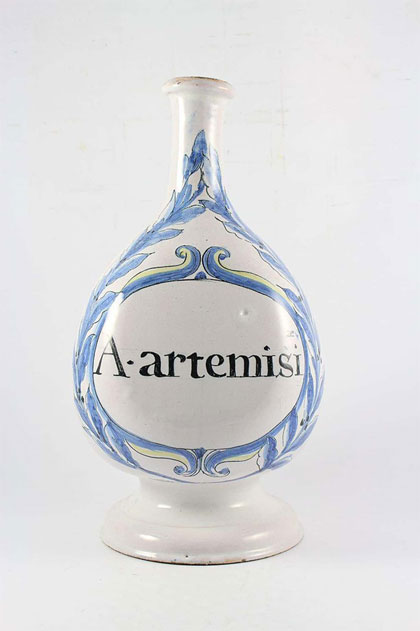 Her Makeup Was Called Aqua Tofana, And It Killed In Four Drops
Her Makeup Was Called Aqua Tofana, And It Killed In Four Drops
Giulia Tofana’s signature poison was marketed as Aqua Tofana. It could kill a man in as little as four drops of poison, meted out over a matter of days or weeks to avoid suspicion. Aqua Tofana was completely tasteless, odorless, and colorless – making it the perfect poison to mix into a glass of wine or any other drink. The recipe was a mixture of arsenic, lead, and belladonna, all deadly poisonous substances.
In addition, Aqua Tofana was disguised as a typical woman’s cosmetic or even a religious healing oil, so that no husband would suspect his wife’s intentions until it was too late.
Weird History @ ranker.com
• Photo: Dante Gabriel Rossetti/Public Domain / Wikimedia Commons
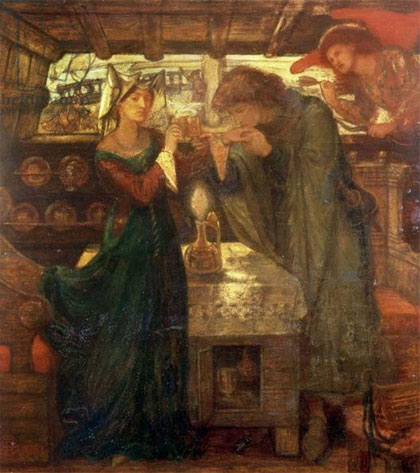 Unhappy Wives Used The Poison To Kill Their Husbands
Unhappy Wives Used The Poison To Kill Their Husbands
Who bought Aqua Tofana? The market for Giulia’s poison was unhappy wives. Women were often forced into marriage by their families without having a say in the matter. Once married, husbands had complete control over their wives and women were often completely powerless. Husbands could beat their wives without facing any punishment or subject them to all kinds of cruel treatments.
No wonder some women wanted to be widows.
Giulia Tofana’s poison offered women an “early Italian divorce,” by giving women the power to kill their husbands and become widows.
• Photo: Wellcome Images / Wikimedia Commons / CC-BY-4.0
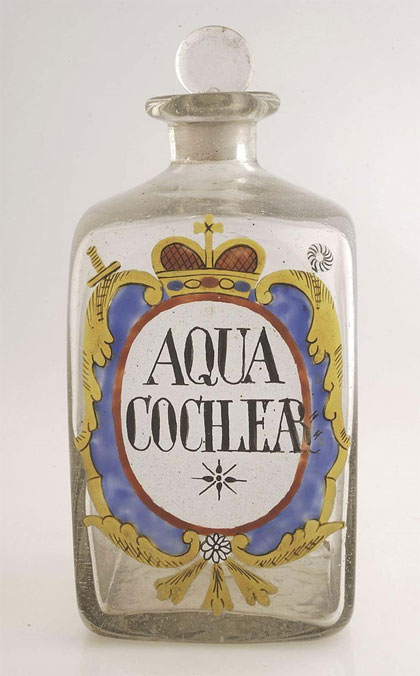 Aqua Tofana Was The Perfect Disguise For The Toxins
Aqua Tofana Was The Perfect Disguise For The Toxins
Giulia Tofana sold her poisoned concoction in two different forms. First, she disguised Aqua Tofana as a powdered makeup. Women could set the small container on their dressing tables next to other lotions and perfumes without raising suspicion from anyone. But Tofana’s second disguise was even more ingenious. She sold Aqua Tofana hidden in small vials with the image of Saint Nicholas of Bari. The vial claimed to be “Manna of St. Nicholas of Bari,” a special healing ointment that looked like a devotional object. These disguises successfully fooled the authorities for nearly 50 years.
• Photo: Evelyn De Morgan / Wikimedia Commons / Public Domain
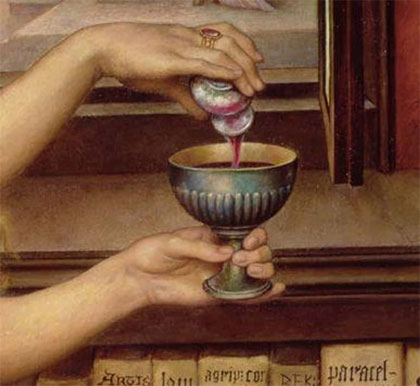 Giulia Tofana Wasn’t The Only Woman Poisoning People In The Renaissance
Giulia Tofana Wasn’t The Only Woman Poisoning People In The Renaissance
Poison was known as women’s weapon of choice when they wanted to murder someone in medieval and early modern Europe. Poison was associated with cosmetics: a number of Renaissance cosmetics contained poisonous ingredients like arsenic, belladonna, and cochineal. Belladonna was popular because it dilated pupils, which fit with the Renaissance standard of beauty. But along with dilated pupils, the lethal nightshade could cause blindness.
Historian Annette Drew-Bear has argued that Renaissance plays featured women applying face-paint on stage to reference women’s false and poisonous nature. So Giulia Tofana wasn’t the only woman associated with poisoning people in the Renaissance – not by a long shot.
• Photo: Bartolomeo Veneto / Wikimedia Commons/Public Domain
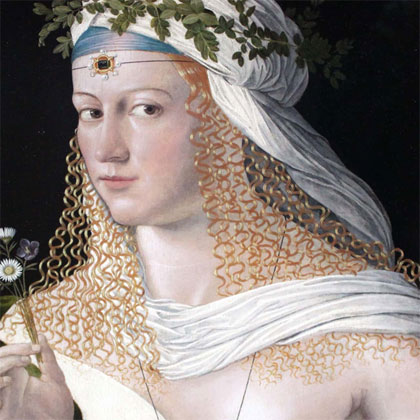 Italy’s Most Famous Female Poisoner Was Lucrezia Borgia Who Was Rumored To Wear A Ring Filled With Poison
Italy’s Most Famous Female Poisoner Was Lucrezia Borgia Who Was Rumored To Wear A Ring Filled With Poison
In the late 1400s, the Borgia family rocketed to power when Rodrigo Borgia became Pope Alexander VI. His daughter, Lucrezia, was on her third marriage by the time she was 22 – and rumors swirled that she murdered her husband. The Borgias’ most famous technique was to serve guests wine mixed with arsenic. Lucrezia supposedly had a ring filled with poison that she could open over her victim’s drink.
Giulia Tofana may have gotten the idea to poison husbands from Lucrezia Borgia, but she went much further than her predecessor, racking up 600 deaths in her career.
• Photo: Anonymous / Wikimedia Commons / Public Domain
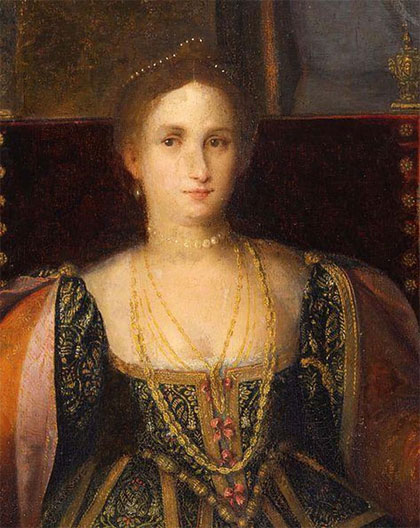 Giulia Tofana’s Mother Was Also A Poisoner
Giulia Tofana’s Mother Was Also A Poisoner
Giulia Tofana wasn’t even the only poisoner in her family. She was the daughter of Thofania d’Adamo, who was executed in Palermo, Sicily, in 1633 after being accused of murdering her husband.
It’s possible that Thofania even used poison to kill her own husband. The family connection didn’t stop there. Giulia’s daughter, Girolama Spera, known as “Astrologa della Lungara,” was also part of the family business. She was executed in 1659 along with her mother.
• Photo: Wellcome Images / Wikimedia Commons / CC-BY-4.0
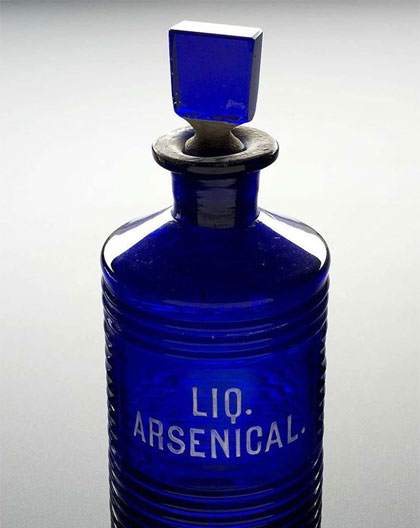 The Main Ingredient In Aqua Tofana Was Arsenic
The Main Ingredient In Aqua Tofana Was Arsenic
Arsenic has been known as the king of poisons and the poison of kings since Ancient Rome. The poison caused its victims to vomit and have diarrhea, symptoms which were easily mistaken for other common diseases. A very small dose can be highly toxic, and it can either kill quickly or very slowly. Arsenic’s versatility made it an almost perfect murder weapon for years – and it was available in any apothecary’s shop as a rat poison or even a cosmetic to whiten the skin.
That’s probably why Giulia Tofana decided to use arsenic in her concoction. Women who bought Aqua Tofana to murder their husbands could always claim it was simply a cosmetic – a believable argument in the Renaissance.
• Photo: New York Botanical Garden / Wikimedia Commons / Public Domain
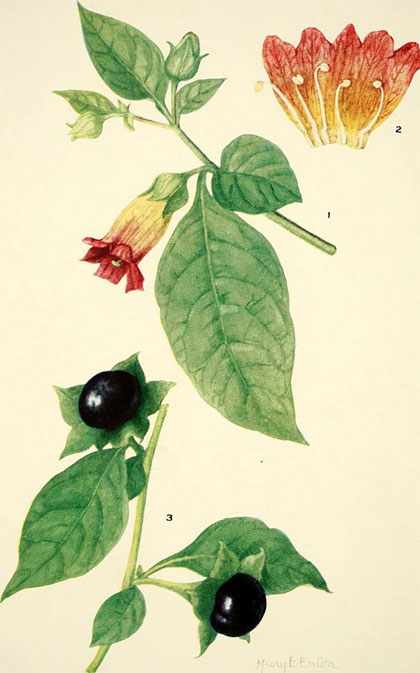 Aqua Tofana Also Contained The Deadly Nightshade Belladonna, Or “Beautiful Lady”
Aqua Tofana Also Contained The Deadly Nightshade Belladonna, Or “Beautiful Lady”
Another key ingredient in Giulia Tofana’s poison was belladonna. The name itself means “beautiful lady” in Italian, but the plant is one of the most toxic in the world. Still, Renaissance women extracted liquid from the berries and transformed it into a cosmetic. Women would place one drop in each eye to make the belladonna dilate their pupils. The side effects included increased heart rates, blurred vision, and even blindness, but beauty was worth it.
However, in Giulia Tofana’s potion, the belladonna, combined with arsenic, killed the victim. No wonder belladonna’s fruit was called “the devil’s berries.”
• Photo: Wellcome Images / Wikimedia Commons / CC-BY-4.0
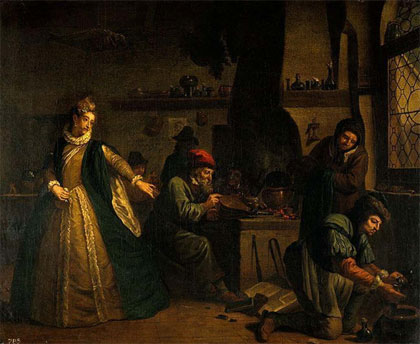 Giulia Was A Widow Herself – And She Might Have Killed Her Husband
Giulia Was A Widow Herself – And She Might Have Killed Her Husband
When she started her business, Giulia Tofana was described as a beautiful young widow. She was known to spend a lot of time with apothecaries, watching as they made their potions. This may have helped Giulia develop her own potion, Aqua Tofana. Or the secret may have been passed down by her mother, who was accused of killing her husband.
Giulia’s own past is unclear, but if she was a widow, it’s possible that she tested out her new potion on her husband before her cosmetics business took off.
• Photo: Giuseppe Vasi / Wikimedia Commons / Public Domain
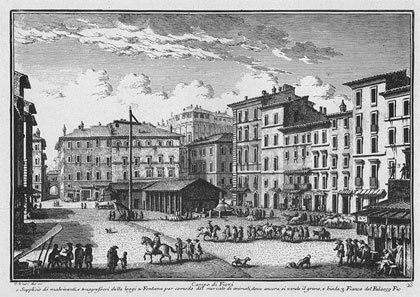 Giulia Tofana Confessed, And She Was Executed In 1659
Giulia Tofana Confessed, And She Was Executed In 1659
The Papal authorities tortured Giulia Tofana until she confessed to poisoning over 600 men between the years 1633 and 1651. It’s possible that the real number was even higher. In July of 1659, Giulia Tofana was executed along with her daughter and three employees. They were killed in Rome’s Campo de’ Fiori, a popular location for execution.
Some of Giulia’s clients were also punished. After her confession, a number of clients tried to feign ignorance and claim their Aqua Tofana was simply for cosmetic purposes. Others were executed or thrown into prison. But the legend of Aqua Tofana continued long after Giulia’s death.
read these next
The Shameless Fraudster Who Lied Her Way To The Top Of Society Before Completely Self-Destructing This Murderous Restaurant Owner Was The First White Woman Ever To Be Sentenced To Death In Georgia Female Killers Who Served Their Victims For Dinner
Filed under:
• Graveyard Shift
• Unspeakable Times
• Weird History
• Explainer




















